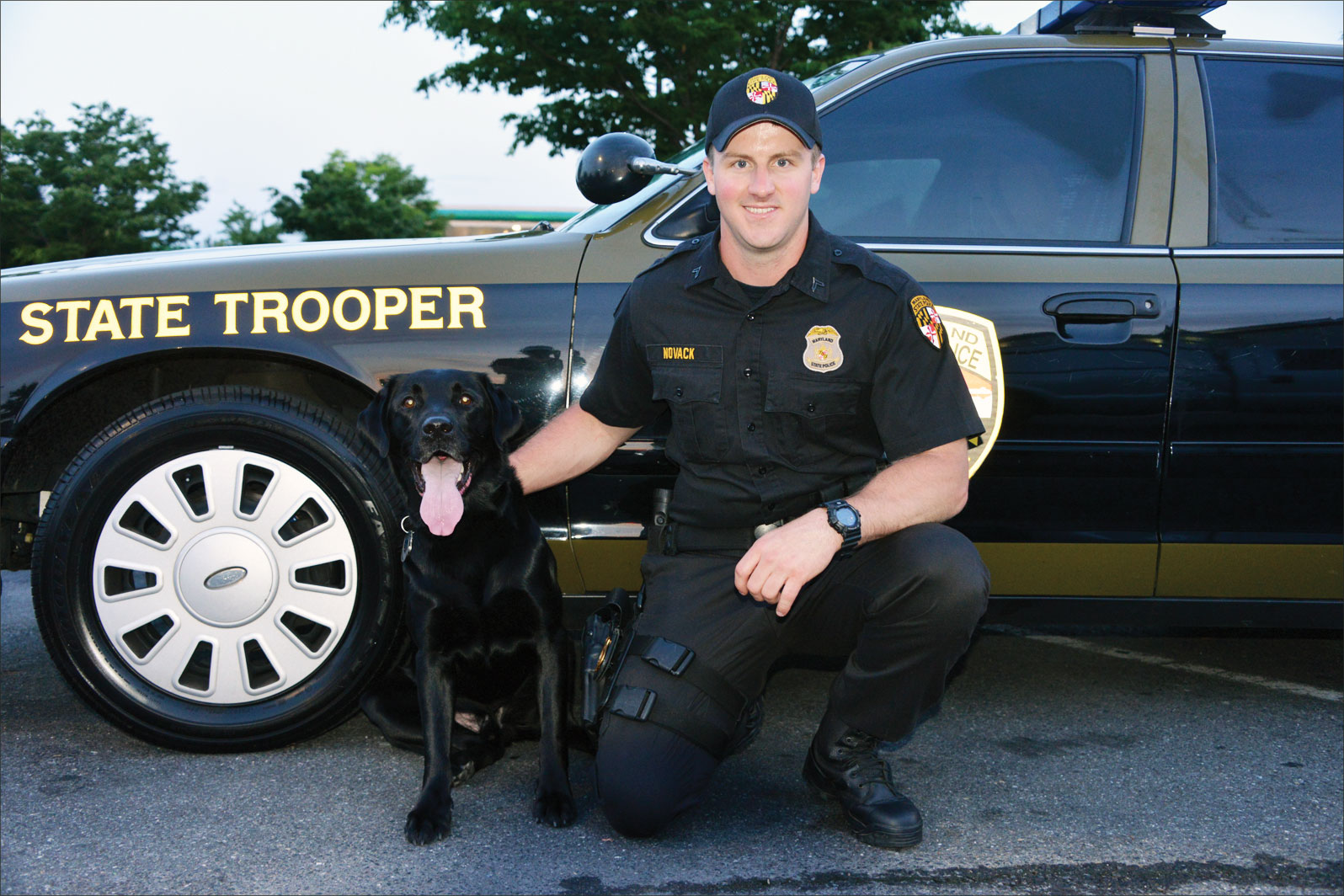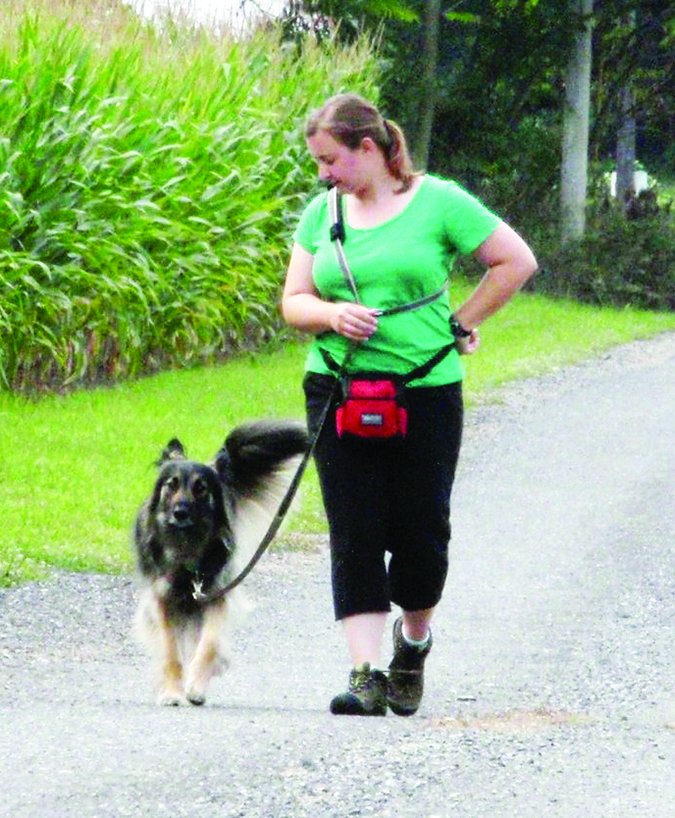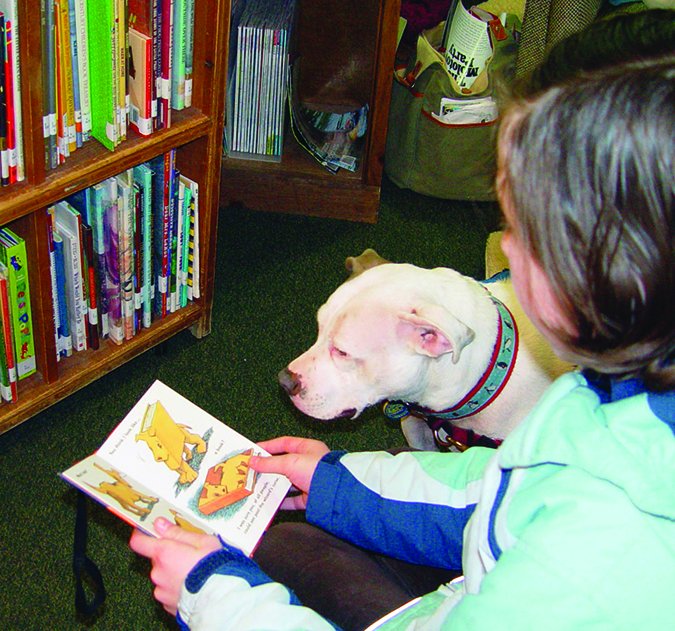There is an unfortunate perception held by many in our culture that dogs in shelters and rescues must be somehow flawed. As a result, according to a 2012 report from the American Pet Products Association, only 20 percent of canine companions in U.S. households were adopted from shelters. This, despite the fact that millions of wonderful canine companions are euthanized for being homeless in shelters every year in this country.
While it’s true that your shelter adoptee may come to you with some behavior and medical challenges, acquiring a dog from a private source doesn’t preclude those challenges. I have had countless clients who purchased their dogs from “private” sources and still ended up with major behavioral and/or medical issues. I know many behavior and training professionals who have found themselves in the same boat. There are no guarantees.
It is also true that “behavior problem” is the number one reason people surrender their dogs to animal shelters. But what may be a behavioral problem for one owner (barks outside in the yard all night and neighbors are complaining) may be easily resolved in another home – such as the dog who used to bark all night in someone’s backyard and who now sleeps blissfully at the foot of your bed every night. If your adoptee comes with more significant issues than that, imagine your sense of pride when you help her overcome those obstacles to become the canine companion of your dreams.
Shelter dogs across the country are overcoming the odds, getting themselves adopted, and achieving some heady accomplishments. If you are among those who elect to not adopt from a shelter or rescue because you want your dog to “do stuff,” take a look at what these shelter and rescue dogs have done!
Labrador Retriever adopted from the Maryland SPCA in Baltimore
Moose’s story was submitted by Corporal Jonathan Novack of the Maryland State Police K-9 Unit. Cpl. Novack prefaced his dog’s story with this quote: “Saving one dog will not change the world, but surely for that one dog, the world will change forever.” It certainly was true for Moose.

On March 12, 2011, I decided I was going to stop by the Maryland SPCA to ‘take a look’ at the dogs that were up for adoption. What I didn’t know was that on that day I would find and bring home a future Maryland State Trooper K-9, my partner, but most of all, my best friend.
“As I walked the kennels looking at the dogs available for adoption, I came across Moose and he looked almost too good to be true. Moose was in his kennel bouncing a tennis ball off the wall to himself and would not stop playing. Knowing this type of focus and attention is what it takes to be a good working police K-9, I adopted Moose that day. Two days later he started his first day of drug detection school with the Maryland State Police.
“Moose and I, as a team, went through 14 weeks of school where Moose was taught basic obedience, his agility and confidence were tested with several tough obstacle courses, and his natural abilities and desires to play, hunt, possess, and retrieve were enhanced. Every day, new challenges were presented that Moose had to learn and overcome and he did so with ease. Every ability he possessed fit perfectly for the type of work he now performs.
“Both Moose and I graduated from drug detection school in June 2011 and have since been working as a team at J.F.K. Highway Barrack. Moose made an impact immediately during his first month on the road and was awarded the J.F.K. Barrack “Trooper of the Month” by Barrack Commander Lt. Dan Fairburn.
“Moose also enjoys his role during community events and school demonstrations where the children love spoiling him with attention. Moose has proven to be one of the top dogs in the State Police and continues to impress with his skills. With his help, I was awarded the 2013 State Police Non-Commissioned Officer of the Year Award, which would not have been possible without him. We are a team who never leaves each other’s side, on or off duty, and I am truly blessed to have him be part of my career, but more importantly, part of my life.”
American Staffordshire Terrier adopted from Dane County Humane Society, Wisconsin
Dylan’s story was submitted by Rebekah Klemm, CPDT-KA, Woofs Dog Training Center, LLC
Dylan was a stray American Staffordshire Terrier, found near Sun Prairie, Wisconsin, in 2008. At the time, Diane Wagner was a volunteer at the Dane County Humane Society (DCHS), and she quickly fell in love with this easygoing, friendly, calm, and laidback couch potato.
“After adopting Dylan, Diane discovered that he had been trained in basic obedience and already knew several cues like down, stay, and come. He fit in well with the three pit bull-mixes in Diane’s household (all adopted from DCHS), and was always very attentive to Diane.
“At the time, Diane was doing agility with one of her other dogs, a ‘free spirit’ who was proving to be a challenge to direct in the agility ring – so Diane decided to try agility with Dylan. To her surprise, he loved it! And, because Dylan was so focused on Diane, they made a great team. Everything was going so well.
“Then, in early 2012, Diane noticed that Dylan’s left pupil was a little bigger and darker than his right one. She took him to the vet, and the vet sent her to an ophthalmologist. After some testing, the ophthalmologist delivered the bad news: it was a tumor and it was best to remove his eye. Diane was devastated. She wanted to see her boy continue to do the things he loved, but could a one-eyed dog do weave poles? How would he see the poles on his left side?
“As Dylan recovered, though, Diane could see that he wasn’t skipping a beat. She decided to try agility with him again. Dylan acted as if he hadn’t missed a day – he hit the weave poles without hesitation, had no problems with the dog walk, and even took a few off-course jumps for ‘extra credit’!
“Since then Dylan has proven himself to be an excellent ambassador for the American Staffordshire Terrier breed, and even has his own fan club, which cheers him on at the agility competitions. Dylan was awarded the AKC 2012 Top American Staffordshire Terrier in the Preferred Agility Classes. ‘In my wildest dreams, I never thought Dylan and I would be getting an award like this!’ said Diane. ‘I wasn’t really trying to get any awards, but just to have fun with Dylan.’ “
German Shepherd Dog-mix adopted from Briggs Animal Adoption Center, Charles Town, West Virginia
Handel’s story was submitted by Jessica Miller, PMCT, ANWI, Go Pawsitive, LLC
Nothing about Handel’s life has been easy,” says his adopter, Jessica Miller. After seeing him running stray in Ranson, West Virginia, matted, emaciated, and covered in ticks, a staff member at a local shelter spent 15 days trying to catch him, finally succeeding with a humane trap. The shelter adopted him out, but the home was not a good fit; he soon showed signs of protective aggression around the family’s mother. They stuck with him for more than a year, hoping that training would fix his issues. Unfortunately, they were directed to a harsh style of training and Handel’s behavior began to escalate toward the children in the home. They elected to return him to the shelter.

“That was when he came into our lives,” Jessica says. “As the head trainer at Briggs Animal Adoption Center at that time, I was responsible for Handel’s rehabilitation plan. I could see that his ‘training’ had left him confused and wary of strangers. Anytime a person passed his kennel he would lunge relentlessly at the door. On our first meeting I was greeted with this behavior. I walked forward and opened the kennel door. Handel shrank back into a corner of the kennel, growled, and peed. I sat down and he came forward slowly, finally lying down and putting his head in my lap with a great sigh. I put my hand on his head to give a comforting touch and was met with a deep growl. Clearly he was a very confused and conflicted fellow. I obviously had to take him home.”
Recognizing that the stress of the shelter would undermine a behavior modification program, Jessica took Handel home as a foster dog. She and I began systematic work to help Handel accept people, new things, strange sounds, and most importantly Jessica’s husband Chris. This was critical, because as Jessica describes it, “Handel had decided that Chris must remain at least 10 feet away from my person. Having a 55-pound German Shepherd-mix regularly lunging between you and your spouse isn’t very romantic!”
At the same time, Jessica began taking Handel to classes for K9 Nose Work®, a style of scent work created for the enrichment of companion dogs. “I’d been taking nose work with my other dog and had seen the benefits that sensitive/reactive dogs in our class had enjoyed by participating.” Jessica says that Handel was not a natural – “In fact his first class session was a bit of a disaster!” – but as time went by, Handel became more and more willing to explore the boxes.

“Over time, Handel’s searching became more immediate and direct,” says Jessica. “Then one day we noticed that his tail was up and waving while he worked, and we knew that we had cleared a huge hurdle. As Handel became more comfortable and confident with his nose work, he also became more relaxed about coming into class, and even began soliciting attention from other members of class. Now, as soon as he puts on his harness, he eagerly hops into his crate and sits waiting for his turn to work. He is now a dog with something to look forward to each week.”
If you hadn’t already guessed, Handel is no longer Jessica’s foster dog; he’s her dog, and a very successful one at that. “When I started K9 Nose Work with Handel it was not with an eye for competition,” Jessica explains. “We’ve been working together solidly for two years now, and as his nose work has steadily improved so has his behavior around people (including Chris).
“I recently decided he was ready to enjoy a trial day, so a few weeks ago Handel and I competed together in an NACSW K9 Nose Work trial in Gettysburg, Pennsylvania. He had to work in front of two cameras and two large male judges, but work he did, and at the end of the day he went home with an NW1 title. He wasn’t the fastest dog – we were 10th out of the 34 dogs that day – but he was correct and confident and happy the whole day. His happy, waving tail was the biggest win in my book!”
Mastiff/pit bull-mix adopted from the Norfolk Animal Care and Adoption Center, Virginia
Enzo’s story was submitted by Dawn Kalinwoski, Poised Pups, LLC.

Enzo is a 5-year-old male mastiff/pit bull-mix who found his way to the Norfolk Animal Care and Adoption Center (the municipal shelter in Norfolk, Virginia), as a stray. He was about six months old at the time. When he arrived at the shelter, he was dangerously malnourished and underweight – his bones protruded through the skin on his 50-pound frame, he was suffering from a respiratory infection, and he had a serious infestation of intestinal parasites. While at the shelter, he was given excellent care: proper nutrition, medication for his maladies, and lots of love from the shelter staff.
Enzo’s luck really turned for the better the day his future adopter, Miki Keilholtz, stopped by the shelter. Miki was recovering from the loss of her previous companion dog, Milo, and she had no intention of adopting another dog. However, something about Enzo’s eyes told Miki to take him home.
“Enzo acclimated quickly to his new home. He gained weight and became healthy. He immediately took to the positive manners training that Miki used as a way to communicate with him. Enzo mastered many basic obedience cues as well as a plethora of tricks suitable for showing off.

“Enzo’s life was great until he suffered a knee injury while playing with another dog at a local park. Luckily, with proper treatment and rest, Enzo avoided surgery and recovered completely.
“Miki and Enzo went on to pass their American Kennel Club Canine Good Citizen (AKC CGC) test. I had the pleasure of working with Miki and Enzo as they prepared for and passed the therapy-dog certification. As a certified therapy dog, Enzo is now a regular visitor at Lake Taylor Transitional Care Hospital in Norfolk, and he is a Tales-to-Tails reading partner with the Norfolk Public Library.
“In 2013, Enzo was voted one of Norfolk’s Canine Crusaders for the Elizabeth River Project, an ongoing environmental campaign. He also lends his time as a ‘spokesdog’ to raise funds for the shelter. He is featured in the shelter’s latest fundraiser, a cookbook titled Sit, Stay, Eat. The cookbook’s launch recently featured a book ‘signing’ session with ‘pawtographs’ by none other than Enzo himself!”
Pit bull adopted from Out of the Pits, Inc., Albany, New York
Helen of Troy’s story was submitted by Helene G. Goldberger, Heartdog.
I grew up with dogs – always rescue dogs; that ethic was instilled in me at an early age,” says Helene. “After moving to upstate New York in the late 1980s and adopting my first pit bull, I became somewhat obsessed with their plight. This led me to become a longtime volunteer with Out of the Pits, Inc. (OOTP), a small non-profit organization that has done yeoman’s service for pit bulls in our community through education, rescue, training, and wise placements, led by the amazing Cydney Cross.
“After we lost our first pit bull and our hearts had begun to heal, we went to Animal Farm Foundation (AFF) to meet Helen. She had been found on the streets of Troy, New York, and brought into a shelter, where it was discovered she was deaf. She was on the euthanasia list for that reason, when a compassionate vet tech saved her by taking her home. Since OOTP did not have space at the time for an adult dog, Animal Farm Foundation literally came to the rescue.
“When we adopted Helen from AFF, she had already begun basic training with positive reinforcement methods. Instead of a clicker (since she couldn’t hear it), she was taught that thumbs-up meant goodies were coming.
“When we first adopted her, we worked with local positive reinforcement trainer Jody Diehl of Dog’s Best Friend, who gave us additional tools to use with Helen such as using vibration, on/off light switch, and practicing collar grabs with her. We also bought and read Living With a Deaf Dog, by Susan Becker.
“Helen had little experience with the world at large; she screamed, loudly and shrilly, upon seeing other dogs, people, vehicles, and any other novel stimulus. Another wonderful trainer, Corrina Bright, MS Ed., CPDT-KA of Canine Connection Training, helped me see that Helen’s screaming was not aggression but rather frustration.
“We used the Premack Principle (using a more desirable behavior – from the dog’s perspective – as the reinforcer for a less desirable behavior), giving Helen access to things she wanted once she gave us her focus. Over time, she not only became a calm and happy girl in public as well as at home, she passed her therapy dog test with Therapy Dog, Inc., and is a volunteer with the Veteran’s Administration Hospital in Albany. Helen has also been a reading dog at the library in Rensselaerville, and has been doing competitive agility for more than two years.”
Who Rescues Whom?
I still get tears in my eyes as I re-read these stories. My own shelter dogs have won competition titles, found missing turtles, and proved to be invaluable helpers in my training and behavior work, so I know very well how awesome and accomplished shelter and rescue dogs can be. Corporal Novack says it best, and most eloquently. We are all blessed to have them as part of our lives.
Pat Miller, CBCC-KA, CPDT-KA, is WDJ’s Training Editor. She lives in Fairplay, Maryland, site of her Peaceable Paws training center, where she offers dog-training classes and courses for trainers. Pat is also the author of many books on positive training. She has a terrific brand-new book, “How to Foster Dogs: From Homeless to Homeward Bound.”






